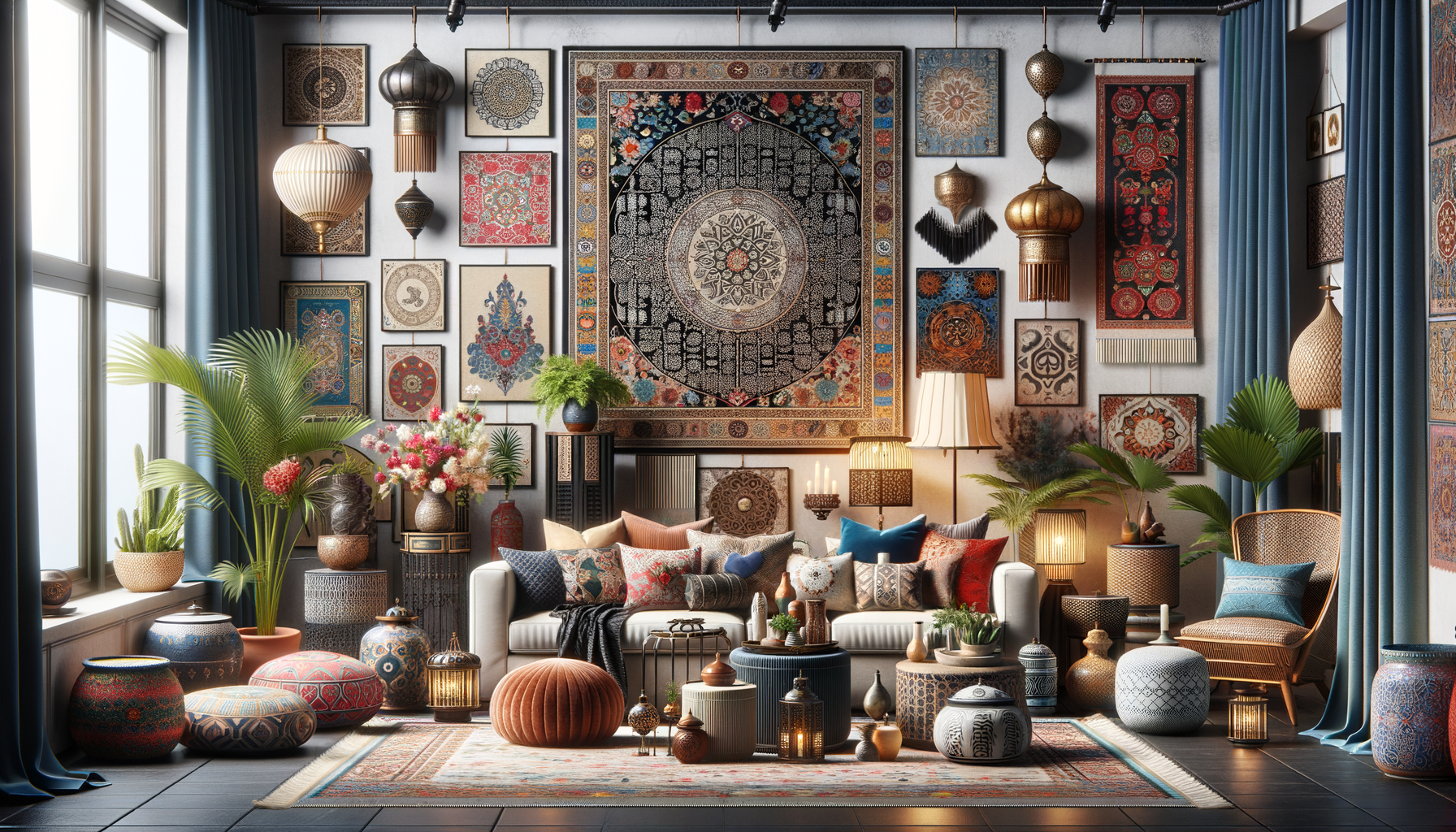
Exploring the Diverse World of Home Decor Products and Styles
The Evolution of Home Decor Styles
Home decor has evolved significantly over the decades, mirroring changes in society, technology, and cultural influences. From the ornate designs of the Victorian era to the sleek, minimalist trends of modern times, decor styles have continuously adapted to reflect the prevailing tastes and values of each period. The 20th century alone saw a dramatic shift in decor preferences, beginning with the opulence of Art Deco in the 1920s, characterized by bold geometric patterns and rich colors. This was followed by the mid-century modern movement, which embraced simplicity and functionality with clean lines and organic forms.
In recent years, the trend towards sustainable and eco-friendly decor has gained momentum. Consumers are increasingly conscious of the environmental impact of their choices, leading to a rise in the popularity of recycled materials and ethically sourced products. This shift is not just about aesthetics but also about making responsible choices that contribute to a healthier planet.
Understanding the evolution of home decor styles can provide valuable insights into how cultural and technological changes influence our living spaces. It also highlights the importance of personal expression in interior design, as individuals seek to create environments that reflect their unique tastes and lifestyles.
Key Elements of Modern Home Decor
Modern home decor is defined by a few key elements that set it apart from other styles. Simplicity and functionality are at the core, with a focus on clean lines and uncluttered spaces. This approach creates an environment that is both calming and efficient, making it ideal for the fast-paced lifestyle of today.
Another hallmark of modern decor is the use of neutral color palettes. Shades of white, gray, and beige dominate, providing a versatile backdrop that can be easily personalized with accents of color. This minimalist color scheme not only enhances the sense of space but also allows for greater flexibility in decorating.
Materials play a crucial role in modern decor as well. Natural materials like wood, stone, and metal are commonly used, often in their raw or unfinished forms. These materials bring a sense of warmth and authenticity to the space, contrasting with the sleekness of modern design. Additionally, the integration of technology is a significant aspect of modern decor. Smart home devices and innovative lighting solutions are seamlessly incorporated into the design, enhancing both functionality and aesthetic appeal.
Incorporating Personal Style into Your Decor
While understanding decor trends is valuable, the most important aspect of home decor is personal expression. Your home should be a reflection of your personality and lifestyle, and there are countless ways to achieve this. Start by identifying your personal style—whether it’s bohemian, industrial, rustic, or eclectic—and use it as a foundation for your decor decisions.
One effective way to personalize your space is through the use of artwork and accessories. These elements can add character and interest to a room while showcasing your unique tastes. Consider incorporating pieces that have personal significance, such as family heirlooms or souvenirs from your travels.
Furniture selection is another opportunity to express your style. Mix and match different pieces to create a look that is uniquely yours. Don’t be afraid to experiment with bold colors or patterns, as these can add vibrancy and energy to your space. Remember, the key to successful decor is balance—ensure that all elements work harmoniously together to create a cohesive and inviting environment.
The Impact of Technology on Home Decor
Technology has revolutionized many aspects of our lives, and home decor is no exception. The integration of smart home technology has transformed the way we design and interact with our living spaces. From automated lighting systems to voice-activated assistants, technology offers new possibilities for enhancing comfort and convenience.
One of the most significant impacts of technology on decor is the rise of virtual interior design services. These platforms allow users to visualize and plan their decor projects from the comfort of their own homes. With the help of augmented reality, homeowners can experiment with different layouts, colors, and furniture pieces before making any physical changes.
Moreover, technology has made it easier to access a wide range of decor products and ideas. Online platforms provide endless inspiration, allowing individuals to explore different styles and trends from around the world. This accessibility has democratized interior design, enabling more people to create spaces that reflect their personal tastes and preferences.
The Role of Sustainability in Home Decor
As environmental awareness continues to grow, sustainability has become a key consideration in home decor. Many consumers are seeking ways to reduce their carbon footprint and make eco-friendly choices in their homes. This has led to an increased demand for sustainable materials and products.
Recycled and upcycled materials are becoming more popular in decor, offering a way to reduce waste and conserve resources. Furniture made from reclaimed wood or recycled metal not only looks stylish but also supports a more sustainable lifestyle. Additionally, the use of natural fibers in textiles and rugs is a growing trend, as these materials are biodegradable and have a lower environmental impact.
Energy efficiency is another important aspect of sustainable decor. Incorporating energy-saving appliances and lighting solutions can significantly reduce a home’s energy consumption. Solar panels, LED lighting, and smart thermostats are just a few examples of how technology can be used to create a more sustainable living environment.
Ultimately, embracing sustainability in home decor is about making conscious choices that contribute to a healthier planet while creating beautiful and functional spaces.


